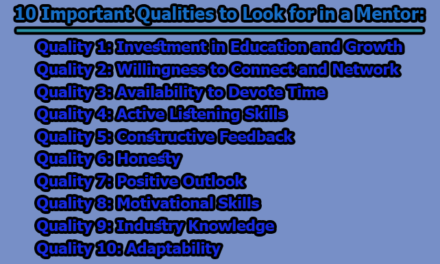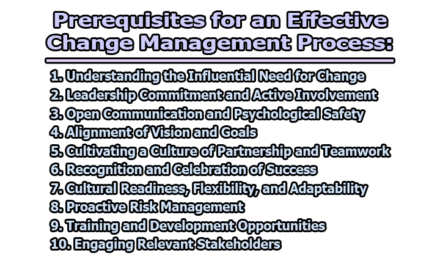Strategies to Prevent Micromanagement in Your Team:
Micromanagement is a pervasive problem in the workplace that can stifle creativity, hinder productivity, and demoralize team members. As a leader, it’s essential to recognize the signs of micromanagement and implement strategies to prevent it. In this article, we will explore the various aspects of micromanagement, its detrimental effects, and offer comprehensive strategies to prevent micromanagement in your team that promotes trust and autonomy.
Section 1: Understanding Micromanagement:
Before diving into strategies to prevent micromanagement, it’s crucial to understand what micromanagement is and why it occurs.
1.1 What is Micromanagement?
Micromanagement is a management style where a leader or manager excessively involves themselves in the details and day-to-day activities of their team members. This often includes closely scrutinizing tasks, constantly checking in, and making decisions that should be left to team members.
1.2 Why Does Micromanagement Occur?
Micromanagement can stem from a variety of reasons, including:
- Lack of Trust: A leader may not trust their team’s abilities or judgment, leading them to feel the need to control every aspect of their work.
- Perfectionism: A desire for perfection can drive a leader to become overly involved in tasks, believing that no one else can meet their standards.
- Fear of Failure: Leaders may fear that their team will make mistakes, potentially reflecting poorly on them as the responsible party.
- Insecurity: Insecure leaders may micromanage to assert their authority and demonstrate their importance within the team.
- Lack of Communication: Poor communication can lead to micromanagement, as leaders may not have a clear understanding of their team’s progress or challenges.
Section 2: The Detrimental Effects of Micromanagement:
Micromanagement can have profound negative effects on both the team members and the overall organization. Understanding these consequences can help motivate leaders to prevent and address micromanagement.
2.1 Decreased Morale: Micromanagement can erode team morale and motivation. Team members who feel that their work is constantly scrutinized or undervalued are more likely to become disengaged and dissatisfied.
2.2 Reduced Creativity and Innovation: Creativity and innovation thrive in an environment where team members have the freedom to explore new ideas and approaches. Micromanagement stifles this creative spirit, limiting the team’s potential.
2.3 Impaired Productivity: Micromanagement consumes valuable time and resources. When leaders are constantly involved in tasks and decision-making, it hampers the efficiency of the team and diverts energy from more critical responsibilities.
2.4 High Turnover Rates: Team members subjected to micromanagement are more likely to seek new opportunities elsewhere. High turnover rates can be costly for organizations in terms of recruitment and training.
2.5 Hindered Professional Growth: Micromanagement deprives team members of the chance to learn from their own experiences and mistakes. This stunts their professional growth and development.
Section 3: Strategies to Prevent Micromanagement:
Now that we have a solid understanding of micromanagement and its detrimental effects, let’s explore strategies to prevent this management style and foster trust and autonomy in your team.
3.1 Define Clear Expectations and Goals: One of the primary reasons leaders micromanage is a lack of clarity regarding what they want their team to achieve. To prevent this, leaders should:
- Establish clear and well-defined expectations and goals for each project and task.
- Communicate these expectations regularly and transparently.
- Ensure that the team understands the purpose, scope, and deliverables of each project.
- Define the roles and responsibilities of each team member.
- Set clear standards and criteria for success.
When team members have a clear understanding of what is expected of them and the overall project, they are more likely to take ownership of their work and require less micromanagement.
3.2 Empower Your Team: Micromanagement often arises from leaders’ fear of losing control. To prevent this, leaders should empower their team members by:
- Providing the necessary authority, resources, and support for them to solve problems, implement solutions, and innovate.
- Trusting their team’s judgment, skills, and expertise.
- Respecting their opinions and suggestions.
Leaders can still provide guidance, feedback, and coaching, but they should avoid interfering, dictating, or overruling their team’s decisions. By empowering the team, leaders can inspire self-motivation and self-driven behavior.
3.3 Delegate and Prioritize Tasks: Leaders may micromanage because they are overwhelmed by their workload and find it challenging to delegate tasks effectively. To address this issue, leaders should:
- Identify tasks that only they can perform and those that can be delegated to team members based on their strengths, interests, and development needs.
- Prioritize tasks based on urgency and importance.
- Focus on tasks that have the most significant impact and value.
Effective delegation allows the team to develop their ideas and take actions without the need for constant oversight. It also frees up the leader’s time to focus on higher-priority tasks and personal growth.
3.4 Give Feedback and Recognition: Micromanagement can also stem from a lack of confidence in the team’s performance. To prevent this, leaders should:
- Provide regular feedback to team members, offering constructive, specific, and timely guidance that helps them improve their work and learn from their mistakes.
- Recognize their efforts, contributions, and results.
- Show appreciation and gratitude for their work.
Balancing accountability for outcomes with constructive feedback and recognition ensures that team members feel valued and motivated to perform at their best.
3.5 Encourage Collaboration and Communication: Micromanagement may arise from leaders’ isolation from their team. To prevent this, leaders should:
- Cultivate a culture of openness, transparency, and feedback within the team.
- Encourage team members to share their ideas, opinions, and concerns.
- Support peer-to-peer collaboration and communication, allowing team members to coordinate directly.
Leaders can stay updated and engaged with their team without checking, interrupting, or bombarding them with messages. An environment of shared goals and accountability naturally reduces the need for excessive oversight.
3.6 Build Trust and Respect: At the core of micromanagement is a lack of trust and respect for team members. To prevent micromanagement, leaders must:
- Trust their team’s abilities and judgment.
- Treat team members as individuals with unique skills and strengths.
- Recognize that mistakes are opportunities for growth and learning.
By building trust and respect within the team, leaders can create an environment where micromanagement is unnecessary.
3.7 Lead by Example: Leaders can prevent micromanagement by modeling the behavior they want to see in their team. This includes:
- Demonstrating proactive and independent work habits.
- Encouraging team members to take initiative and make decisions.
- Showing that autonomy and self-motivation are valued and rewarded.
When leaders lead by example, they inspire their team to follow suit, reducing the need for micromanagement.
3.8 Use Technology Wisely: Technology can be a valuable tool for leaders to stay informed and communicate with their team without micromanaging. Leaders should:
- Implement project management and communication tools that facilitate transparency and accountability.
- Use technology to track progress and share updates without unnecessary intrusion.
Effective use of technology can strike a balance between staying engaged and micromanaging.
3.9 Provide Training and Development: Investing in the training and development of team members can prevent micromanagement. Leaders should:
- Ensure that team members have the necessary skills and knowledge to perform their tasks effectively.
- Encourage ongoing learning and growth within the team.
When team members feel confident in their abilities, they are less likely to need close supervision.
3.10 Address Micromanagement When It Occurs: Even with these strategies in place, micromanagement can still emerge. Leaders should be vigilant and address micromanagement promptly by:
- Having open and honest conversations with team members who exhibit micromanagement tendencies.
- Providing constructive feedback and guidance to help them change their behavior.
- Offering support and resources to help them improve their leadership skills.
In conclusion, micromanagement can be detrimental to both team members and organizations as a whole. Recognizing the signs of micromanagement and implementing strategies to prevent it is crucial for fostering trust and autonomy within the team.
Leaders who define clear expectations and goals, empower their team, delegate tasks effectively, provide feedback and recognition, encourage collaboration and communication, build trust and respect, lead by example, use technology wisely, provide training and development, and address micromanagement promptly can create a work environment where team members thrive, take ownership of their work, and achieve their full potential. In such an environment, the need for micromanagement diminishes, and everyone benefits from increased productivity, creativity, and job satisfaction.

Assistant Teacher at Zinzira Pir Mohammad Pilot School and College










